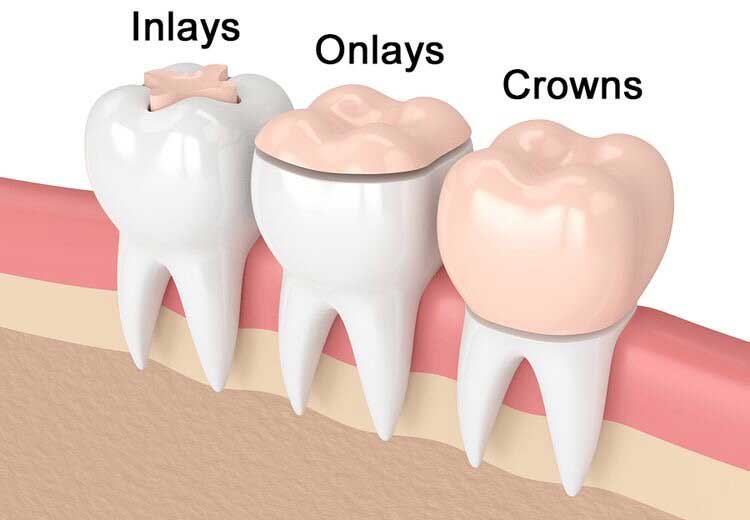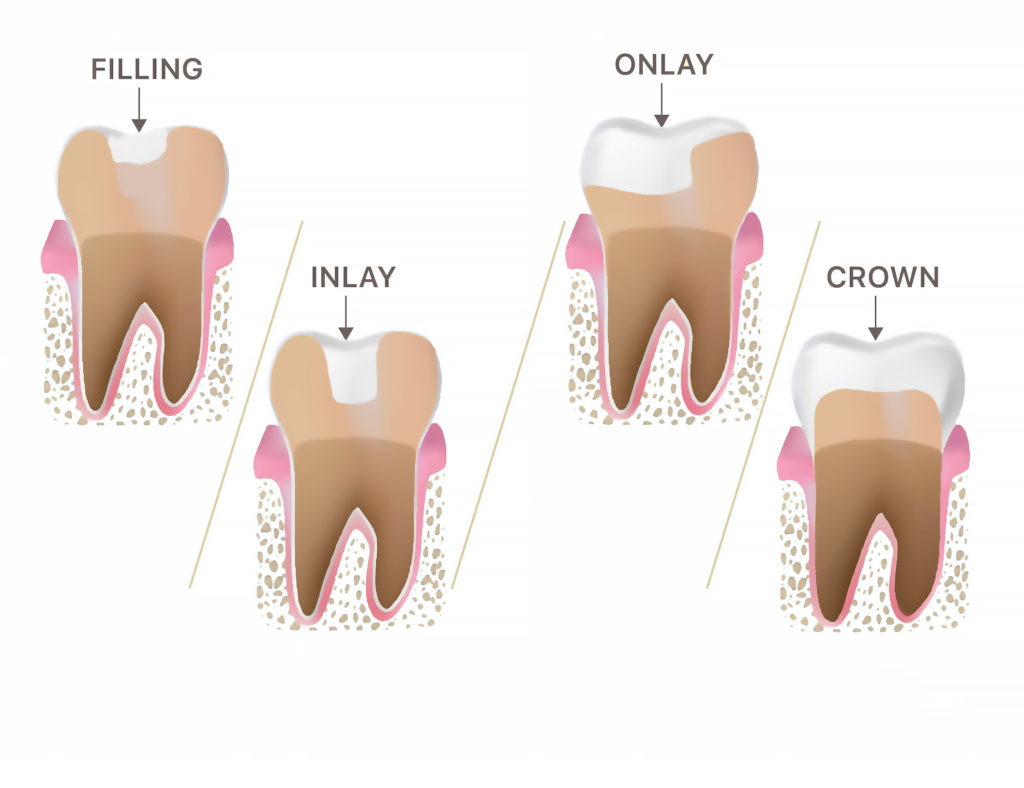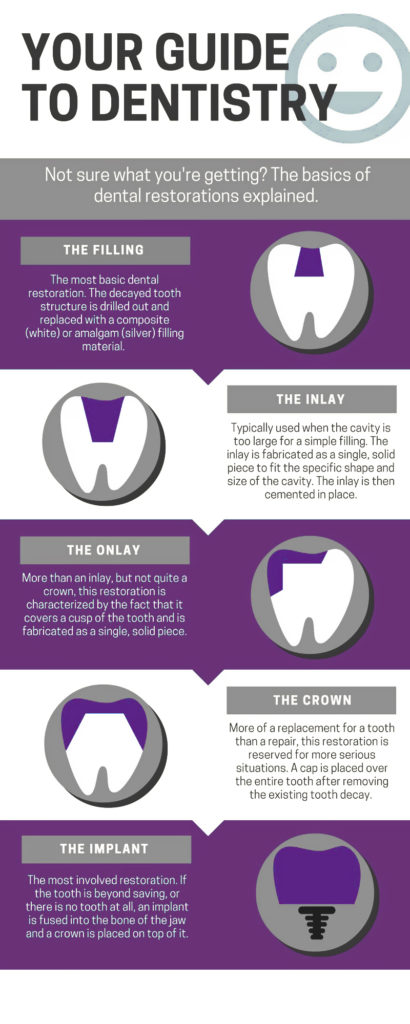
In this article, Dr. Pascal Terjanian will discuss several treatments that are used in dentistry such as dental fillings, inlays, onlays, and crowns. What are their key differences ? Let us start.
What are dental fillings?
A filling is the simplest dental restoration. The decayed tooth is drilled out and restored with a white composite or silver amalgam filling.
What are dental inlays?
Dental inlays are typically used when the cavity is too large for a simple filling. The inlay is fabricated to fit the specific shape and size of the cavity. The inlay is then cemented in place.
What are dental onlays?
A dental onlay is similar fashion as dental is used when the tooth cavity is too large for a basic filling, however, onlays generally have additional surface area coverage than an inlay. Dental onlays are portrayed by the fact that they cover the cusp of the tooth and are made as a single solid piece.

What are dental crowns?
A dental crown is a cover or a cap that a dentist puts on a damaged tooth to restore its function, size, shape, and it also protects the tooth. Crown is used for more significant restorations and is placed on the entire tooth after covering the decay.
Compared to an onlay, a crown is a more aggressive restoration when one can be performed, as more tooth structure needs to be removed to place the cap. onlay. Crowns are advised by a dentist in order to support a large filling on a tooth when there is not adequate remaining tooth structure, to restore missing teeth when connected to a dental bridge, and to cover a dental implant.
Dental crowns, onlays, or inlays can be fabricated from different materials such as porcelain, ceramic, composite resin, metal alloys, ceramo-metal, porcelain fused to metal. Crowns are made to blend in with the natural color of the patient’s teeth. The objective for the three of them is restorations is to reinstate the structure and functionality of the tooth.
Crowns, onlays, and inlays require more than one visit and appointments at the dentist. The steps are:
- Step 1: Remove the tooth decay and perform an endodontic treatment if needed.
- Step 2: Taking prints or a mold of the tooth which will be receiving inlay, onlay, or crown. The prints are then sent to a dental lab to manufacture the inlay, onlay, or crown. The dentist makes a temporary filling or crown while waiting for the final product.
- Step 3: Once the restoration is ready, the temporary tooth is removed and the final inlay/onlay/or crown is placed in the mouth.

Aftercare for Crowns,Onlays,Inlays :
Similar real teeth, crowns,onlays, or inlays can break, and the tooth under them can still get cavities. To prevent cavities or damage to your crown:
- Brush your teeth twice a day with fluoride toothpaste and clean between your teeth every day.
- Avoid chewing hard foods, ice, or other hard objects.
Do your dental regular exams and professional teeth cleanings.
Conclusions should you choose inlays, onlays, or crowns?
At the end of the day, your dentist will assess your teeth and propose the best option in your case. The biggest factor will be the extent of teeth decay /deterioration and their location.
Follow Dr. Pascal Terjanian’s blog if you would like to learn more about dental health and treatments.


